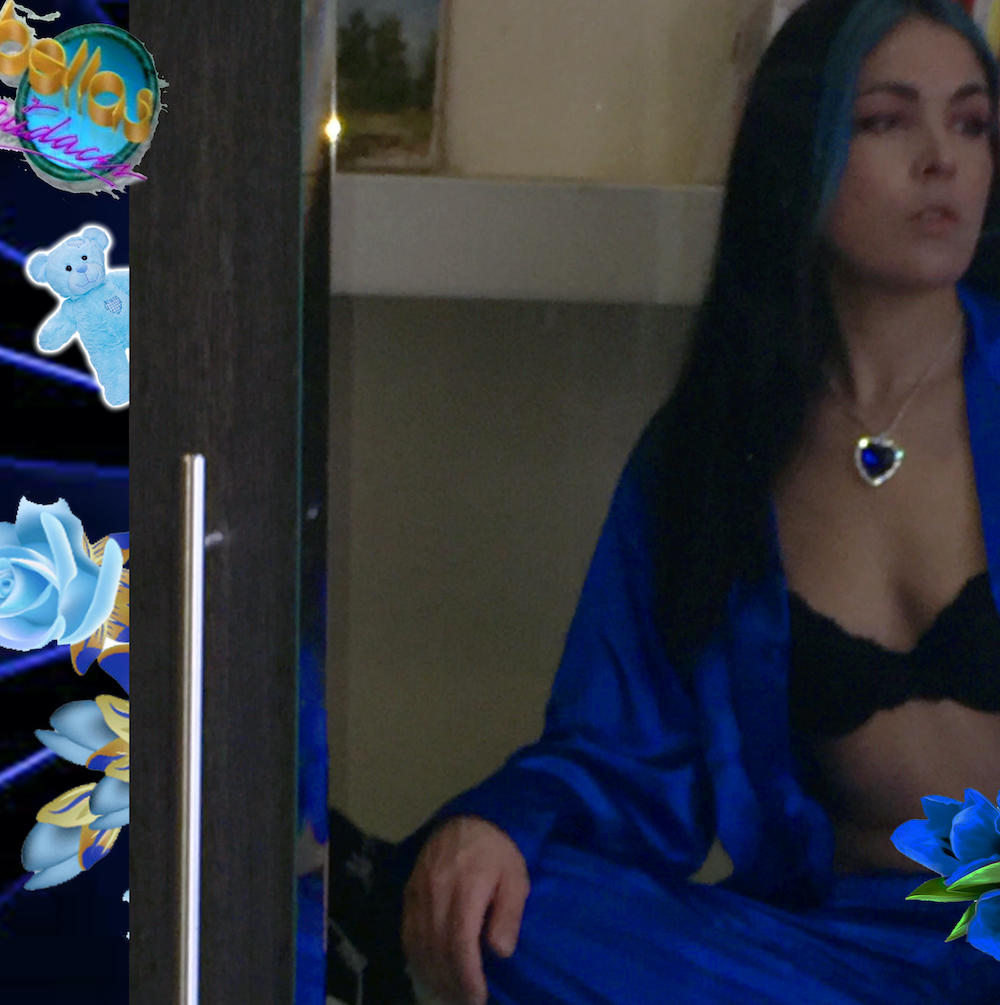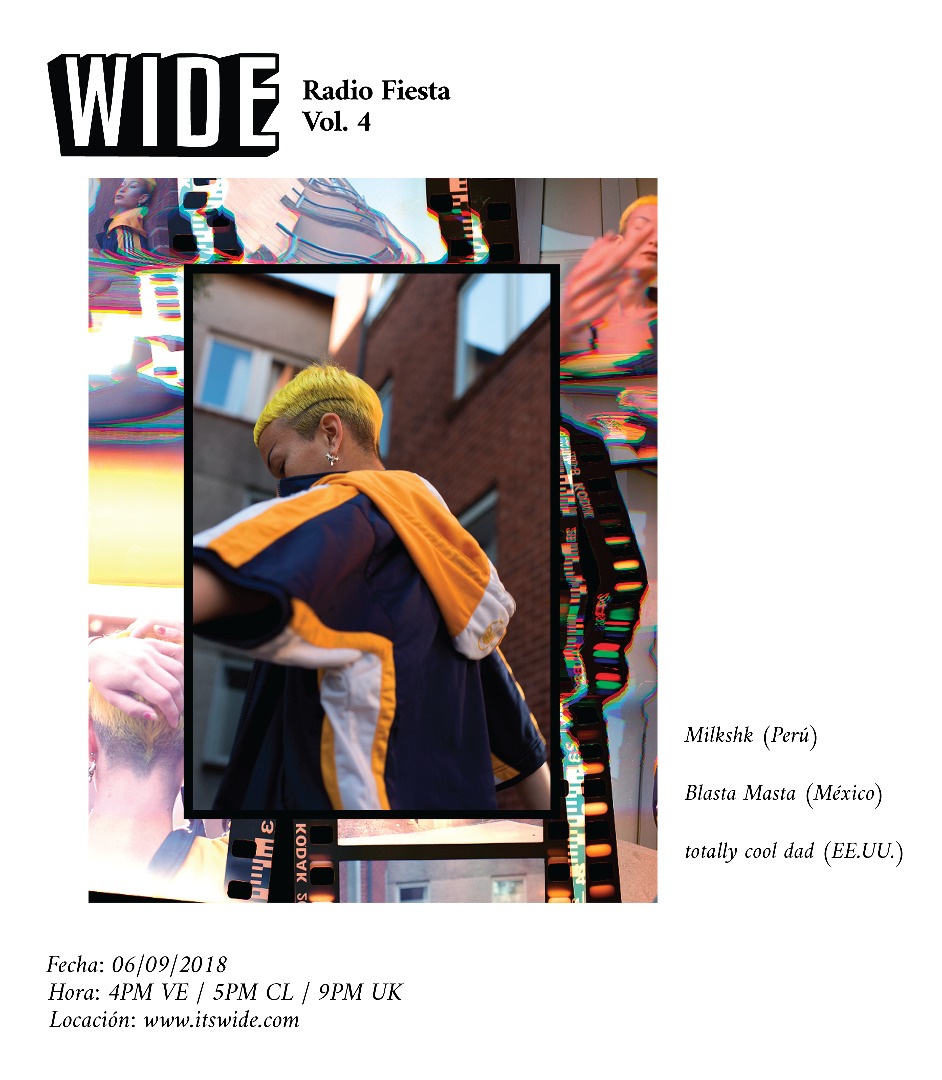Princess Prada: the artistic journey from south to north Q&A

In the anticipation of her performance at the opening night in FLAWA, the Festival of Latin American Women in Arts, we made cafécito and chatted with Princess Prada, to get to know her journey from Chile to Sweden and her motivations as a multifaceted and cross-genre artist.
Carla Garlaschi under her sassy alias Princess Prada, is a Chilean born and raised, Stockholm-based and most recently London exploring artist, using different vehicles to create stories such as performance, video, installation, and of course, music. Currently part of Cherish Label, a swedish independent platform for new artists, releasing music written and produced by people who identify as women or non-binary.
In WIDE, we first met Prada with her single ‘Money, Money’ and we were instantly charmed by her lyrics and swag of this ‘futuristic reggaeton’. Last year she released The Princess Prada EP produced by HABIB1 and mastered by Imaabs, two other names we know well in this house.
In this position where we can easily identify with migration, identity-search, alienation and many other things that come from leaving your first home, we wanted to know Princess Prada’s story and how her journey from south to north influenced her artistic work. She tells us about her upbringing, being a ‘weird’ teenager in Chile and her jump out of the nest moving to Europe, we can say she is living a telenovela.
Q: We are definitely rooted to some places more than others, can you tell us what role does Chile, Stockholm and London play in your life story?
“This is such a tricky question! Chile is my emotional cosmology. Sweden is my professional backbone. London, I am finding out what’s its role, strangely it’s becoming a playground, and a place to get dead serious.
I am originally from Chile, my family are post-World War II immigrants in the Americas, so it’s an important part of my family’s identity this narrative of the migrant, losing everything starting from scratch.
I have these memories of Chile, where I grew up very connected to nature, I was a maker as a kid, building stuff from fruit boxes, hammer, saw and needles, I would sell candies, steal fruits or flowers and sell them… I mean… there’s not much to do in the countryside. As a teenager I had a really hard time at school because the coolest girls in class were the ones from Santiago, they would talk about boys and parties and I wouldn’t know shit.”
Carla used to travel with her dad who as a pilot in a cargo airline, exploring other places such as Miami more than she could back home, she was a self-served teenager, independent and not too interested in the academics of school, still she enrolled in two well-known universities in Chile to study arts but despised the mandatory curriculum.
She wanted to be an actress, a telenovela (soap opera) star so she signed up for acting classes instead, shortly she started receiving love letters from her (male) teacher which made her step away from teather and explore outside of Chile, a feeling many locals get somehow feeling ‘far away’ from the centre of the world, a country that is ‘barricaded’ by natural borders that could make you think it’s to certain point “isolated”. Away from all her family drama, she moved to Spain, worked as a bartender of a Mallorcan drug dealer and then in a Swedish bar, which is how her story links to the swedish capital.

“I fell-in-love with a Swedish Broadway-musical producer and moved to Stockholm. If Chile was to me a world of intuition and chaos, Sweden would become my backbone. I would attend to musical’s rehearsals, premieres and so on. I wouldn’t understand the dialogues, I tried divinating the plot through the decor, the light design, the gardrobe.”
Among the fantasy of living through the visual and the inspiration from her ex “money making” skills betting on horses in his underwear, a man from a powerful family, Princess Prada got contagious with the ambition and success taste.
“I came into art school and it was weird to go there, entertainment was flashy and fancy. Royal Institute of Art Stockholm, wasn’t easy none would understand my cultural references. By force I had to make myself understood without explaining myself, so I opted for the role of a trickster, whose identity is ambivalent.”
Sweden was a difficult, complex place to be for Princess Prada, she felt the need to paint herself as the exotic, outgoing, vibrant latina to try and find a place in the arts social context, she was alienated, blurred between this carachther and her own self. As any artist, exposing all facets of yourself to the sunlight can be damaging, and she exposed herself physically and emotionally enough to be hurt and get lost, hence why she travels back to Chile every year, to find her anchor. This chaotic life-balance has shaped her work, and she undeniably takes a lot from it to build her story as an artist.
“During my time in Stockholm I would have a narrative of this pendulum Sweden-Chile. After a while I got the feeling that I was intellectually stuck and that I was getting a very limited understanding of the world, I got tired of my role in the Swedish society, I could see my next 10 years being tokenized as an artist, but making art about what? In Sweden artists still look at LA, New York and Berlin so, I was wondering how would it live in a place where one could say “OK I am in the center now,” so: London. Being stripped again of my narrative has been real nasty, immensely harsh. And then Brexit, Chile’s social upraise. I felt like I was living in 2D and now I live on 3D, that word, triangulation. My language is changing, I am transmuting, mutating into someone I don’t yet know.”
We told you this was a telenovela. But now, she starts exploring with all the characters, paintings, and thoughts inside her head, we can see now how she utilises all these different means to create not only music but also the whole package of ideas that go with it.
Q: What came first, music or visuals, and when did you start combining both?
“Actually it wasn’t visual arts either music, what came first was writing. For a period I solely showed oil paintings at some art galleries, for some time I was José María Feliú’s art protegee in Mallorca, he would say I was a writer that painted, it was so clear to him.
Now, I borrow this term ‘transmedia storytelling’ a term from digital marketing that is defined as using different formats, platforms and devices to unfold a narrative. One format does not replace the other, together they function as a whole, the ideas is to provide for the audience an holistic understanding.”

Q: If you didn’t go into art, what else would you have chosen to be your career path?
“Deffo telenovela actress. Also, events creator and manager at a secret club organizing stuff like pajama parties. I would be making cupcakes, doing nail art, reading the tarot for living, or I would be a digital strategist, like really bitchy in a fucsia power suit pitching ideas sippin an almond frappe-latte. Or I would run a flower delivery making bouqués with messages in the Victorian language of flowers… It’s like there’s too little time to do it all, I’ll most likely will end up writing it all down as characters of script so I get to do it anyways, fake or real, I will still feel like I lived it as true.”
Q: Speaking of telenovelas, what is your first memory of being exposed to them when you were little?
“I have blurry images of ‘Bellas y Audaces’, that was a telenovela in times of dictatorship (in Chile), the plot revolved around a former vedette’s beauty salon, I guess that’s why there was something transgressive in the air.
Then when I started studying art I began to see telenovelas as pure garbage filled stereotypes, promoting the trap of romantic love but my impression started to change with ‘Machos’, a 2000 soap opera that included a gay character, who was not a pure stereotype but instead returned from abroad to face his father. At home, my family were very conservative about homosexuality, but watching this telenovela they started to reflect on the subject, so that made me realise that telenovelas could be a vehicle to insert topics of debate in family dinners.”
Q: Any recommendations for other Latin American women making music or art that you admire and would like to spread the love?
“Right now I am in love with Sayak Valencia, Mexican philosopher, Eddie Circa, I was stoked with La Gonny Chonga’s video being pregnant, Kali Mutsa for how she creates a mythology around her character, Lila Tirando a Violeta part of the electro pop duo A.M.I.G.A. and spanish artist Chanel is my guilty pleasure.”
Q: Any plans for the rest of the year? Woo, 2020 is going fast!
“I will release material that I have been working on since 2019, a single with Imaabs, an EP with Wannabe DJ, a video with Camilo Bustos Delpin. I have an artistic research in Tokyo, Mexico D.F, also a Latinx event with Plastique Famillie in Toronto. Also, in London I will be part of the Desobediencias Prácticas desde Latinoamérica program in Tate Exchange organized by Latin Elephant.”
She left us with a playlist to walk like you own the place, music Princess Prada listens to mostly in whe she is on the move. Music that is somewhere in between experimental sound, post punk psychedelia Panico, Eurovision and the Viña del Mar Festival. Inspired on the early 2000’s Chilean bubble gum sounds, Wilfred and the Ganga 90’s NY latin rap.
Join Princess Prada among Riobamba and Bushbby this Friday 6th of March at the EartH (Evolutionary Arts Hackney) in London, a night of Latin American pride, fashion, feeling and groove!
The evening will raise money for the next instalment of the Festival of Latin American Women in Arts, a not-for-profit that aims to elevate and celebrate the work of Latin American women in the UK capital.




